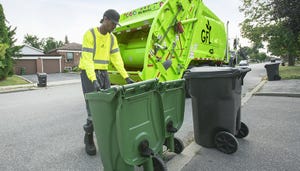Peter Anderson is president of RecycleWorlds Consulting, executive director of the Center for a Competitive Waste Industry, and project director for the multi-state Plastic Redesign Project.
He has been senior lecturer at the University of Wisconsin Department of Applied Economics on recycling systems, chairman of the National Recycling Coalition Policy Workgroup and its landfill subcommittee, and landfill consultant for the Grassroots Recycling Network.
He has been a keynote panel speaker at the Environmental Protection Agency’s national bioreactor conference, and a member of its peer review committee on landfill’s responsibility for greenhouse gases and climate change. He has also prepared a major independent evaluation of landfill financial assurance for the California Integrated Waste Management Board and another on landfill gases contribution greenhouse gases for the EPA.


